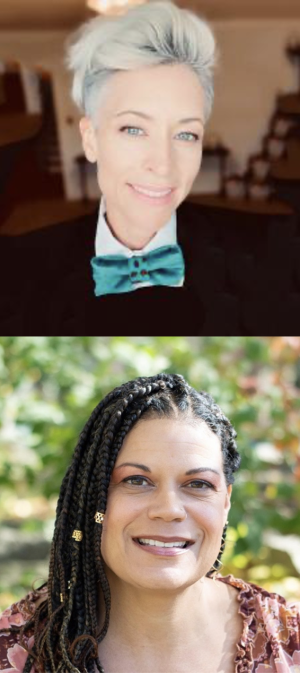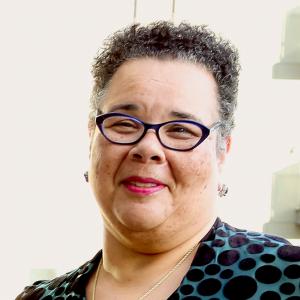Resources

Your PowerPoint slides are not projecting on the screen as students trickle into the classroom. Normally you like to have everything prepared before their arrival, but ITS is not responding to your calls. Running on coffee and a few hours of sleep you begin the lecture only to be interrupted by late students. Pushing your hospitalized parent out of your mind, you continue with the lecture thinking that you never would have disrespected your professors this way. A student in the front row is nodding off to sleep. You made it to class early after dropping kids who were screaming for your attention, with runny noses, off at daycare. An “A” student catches your eye. They are diligently taking notes despite having pulled an all-nighter. It is a scene all too familiar to educators. We check our bodies and emotions at the door and wonder why students don’t also. Our advisors and mentors taught us to be disciplined. Prioritize your research and writing in order to succeed. The life of the mind is built upon outsourcing the mundane things like cooking and cleaning to someone else. Students who prioritize learning information to the neglect of their health are rewarded within the status quo. When they compartmentalize their learning from the messiness of life, it is a relief to the educator. They focus on ideas rather than responsibilities to community. Conversely, students overcome by malnutrition, lack of resources, and abuse are punished. They face negative consequences for prioritizing caregiving over self-care. The message is clear: students who are overcome by contexts beyond their control or extenuating conditions are left to “figure it out” as an acceptable pedagogical tool of disciplined thinking. We as educators often assume that the process of learning is for the students, and our job is to deliver content. We use words like “rigor” and “grit” to put the onus on students to persevere through the stresses of learning. Those who don’t succeed presumably were not worthy. But what if we as educators are the problem? Unhealed trauma certainly inhibits student learning, but, perhaps more to the point, the unhealed trauma of educators perpetuates harm in the classroom. What might trauma-informed pedagogy look like? Stacy Williams explains that trauma is not defined by events, but by the lingering effects on our brains and bodies. People can experience the same event and some seem to emerge unscathed, while others may be left struggling to return to their daily routine. This explains the differing levels of impact upon communities with shared experiences and divergent effects. Rather than adjudicate whether the student’s distress is reasonable (the loss of a pet, end of a romance, hunger, discrimination, etc.), we would do better to model teaching and learning as embodied and contextual. We (the authors) suggest that as educators, one of the best things that we can do to improve pedagogy is to attend to our own bodies and emotions. With this baseline in mind. we can begin to unpack the experience of the professor described above. Perhaps the late student was also visiting a loved one in the hospital, the sleeping student might have also been up most of the night with a sick toddler, and many students have missed breakfast. Paying attention to our own needs influences how we hold the learning space. Stress and trauma disrupt the students’ ability to learn, but they also disrupt educators’ ability to teach. The lingering effects of stress and trauma show up in the brain and body faster than logic and reason can process and remain in the body systems much longer than people realize. Which professors and mentors reminded you to attend to your wounds? If they didn’t, what are the lingering effects? In order to avoid retraumatizing others, initiate self-awareness and get curious about the behaviors of your students. Here are a few questions we propose to get you started: When did I last eat a nutritious meal and drink a full glass of water? Do I need to go outside for some movement? Who have I deeply connected with this week? In short: what do you need today to be the best version of yourself to show up for others? Attentiveness to your bodily and emotional needs sets the tone for trauma-informed teaching and learning.

It is well substantiated that the retention rate in predominantly white institutions (PWI) for BIPOC faculty is abysmally low. Newly hired BIPOC faculty in PWIs report feeling ignored, unwelcomed, even shunned by colleagues and students. They are treated as if, though hired for the job, that they do not belong. Yes, there are some PWIs for which providing hospitality to BIPOC faculty is done well. However, the majority of BIPOC colleagues who leave employment after less than three years report that their reason for leaving hinges upon experiences of being treated inhospitably. With this assertion, I am not focused on overt acts of racism or discrimination. I am, instead for this blog, focused upon acts of cultural insensitivity, lack of basic social skills, and the inability of an institution to be caring, compassionate, and friendly to newcomers who are BIPOC. What goes wrong? Simply put, the new people are not on-boarded, not offered kindness and warmth. Climates of care, hospitality and belonging do not just happen. An ethos of welcoming new people must be attended to by many, many persons. The habits and practices of care, compassion, and belonging when BIPOC persons enter the PWI must be painstakingly exercised and attended to conscientiously. Regrettably, so many schools do NOT have systems for on-boarding, orienting, and providing for the arrival of new persons in the first six to nine months of employment. People feel unwelcomed because no one, in a robust and institutionalized way, is welcoming them. I would like to offer this list of activities, rituals, and happenings for your context so that, from the very beginning, BICOP colleagues feel a strengthen of ties and a genuine forming of connections. All these possibilities will not be for every context and every hire. Find what works for you and the person who is newly hired. Consider this list, and given your context, create new ideas of care for newly hired BIPOC colleagues: Invite the colleague to meals hosted in their honor. These are not meant as informal committee meetings, but gatherings to get acquainted with one another. Decide if the meals are better in an area restaurant or hosted in a private home. In either case, ask about the person’s dietary preference and restrictions. Who on your faculty gives the best parties? Soon after arrival, ask the best host to throw a party for the new BIPOC faculty and have fun. If you are a well-established member of the community, do not be stand-offish. Do not hold-up waiting for the new faculty to ask you to coffee. Take the initiative – invite the new person to coffee or a meal - with no other agenda than getting acquainted. During the conversation listen more than you talk. Develop a ritual of welcoming professors by having the president, provost, dean, or department head introduce the new colleague to their first class, then applaud wildly in front of students. Send the message to students that this new person is not on probation, not still being interviewed, is not less significant as a faculty colleague due to race. Send the message that there is an expectation that all respect will be given to this colleague. Invite the new person to participate in campus rites, rituals, religious services in a role of their own choosing. Assist the person with finding a religious community for themselves and their family should they desire it. Invite the person to the trustee meeting, alum gathering, student event. Plan to introduce and celebrate the arrival of the colleague at the event. Invite the person to attend the campus sports event and sit in the location of honor. Invite the person to the faculty retreat and make sure they have transportation to the location. If the venue is in a rural location where the BIPOC colleague would be unwelcomed, or in danger, change the venue. Make sure the person has club or institutional memberships that are common and available in that context. For example, membership to the local country club, membership to the local gym, membership to the local library, etc. Connect the person to known childcare networks, if desired. Inform the person of access to certain “insider” goodies, e.g., campus guest housing, coupons for travel, use of vacation properties, meals in the refectory, bookstore discounts, etc. Connect the person with one or two colleagues (one from faculty and one from staff) who will take responsibility for on-boarding. Assign an elder faculty colleague to mentor the person on issues of tenure, promotion, and institutional culture. Make sure the person has necessary keys, identifications, computer accesses. Help the person with office set-up. Make sure all available institutional documents are provided, e.g., Employee Handbook, campus calendar, trustee meeting minutes, faculty meeting minutes, organizational chart, phone and email directory, etc. Connect the person with persons who have a similar family structure (persons caring for children, elderly, pets, etc.). Help the person locate doctors, groceries, barber shops, hair and nail salons which are culturally woke. Consider what is unique about the town, city, or area and invite the new person to participate in that regionally cultural event. Create an “ambassadors” list, i.e. a profile of families who would welcome getting calls from new persons about issues as they arise. Ask the new person what they need, or what their family might need, to secure a good quality of life in the new location, then work to provide for that need. In the most hospitable schools, it is understood that all persons in the community have a role and responsibility in welcoming the new colleague - ALL PEOPLE - EVERYBODY! The key is for the new BIPOC faculty person not to feel alone, isolated, abandoned, unwanted, or suspect. In the words of my mother, Nancy B. Westfield, “You do not have to become friends with all the new people, but you do have to be friendly.”
This is just some text in here to test the post.
This is the new side bar for Web Site On Religion, this page is named (custom-sidebar-website_on_religion)
This is the new side bar for Syllabi, this page is named (custom-sidebar-syllabi)
This is the new side bar for scholarship, this page is named (custom-sidebar-scholarship)
This is the new side bar for Blog, this page is named (custom-sidebar-post)
This is the new side bar for programs, this page is named (custom-sidebar-page)
This is the new side bar for grants, this page is named (custom-sidebar-grants)
This is the new side bar for Books Reviews, this page is named (custom-sidebar-book_reviews)